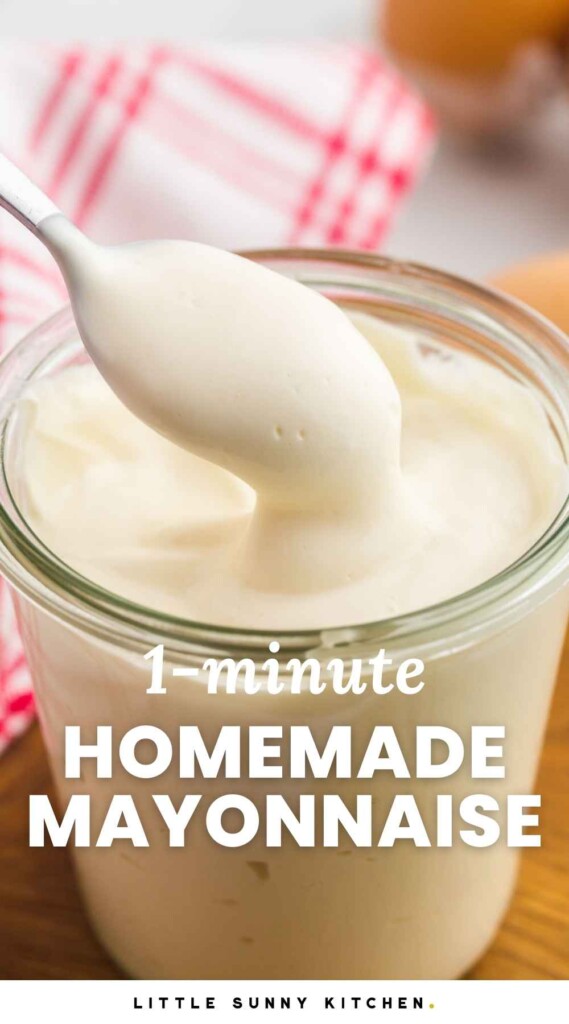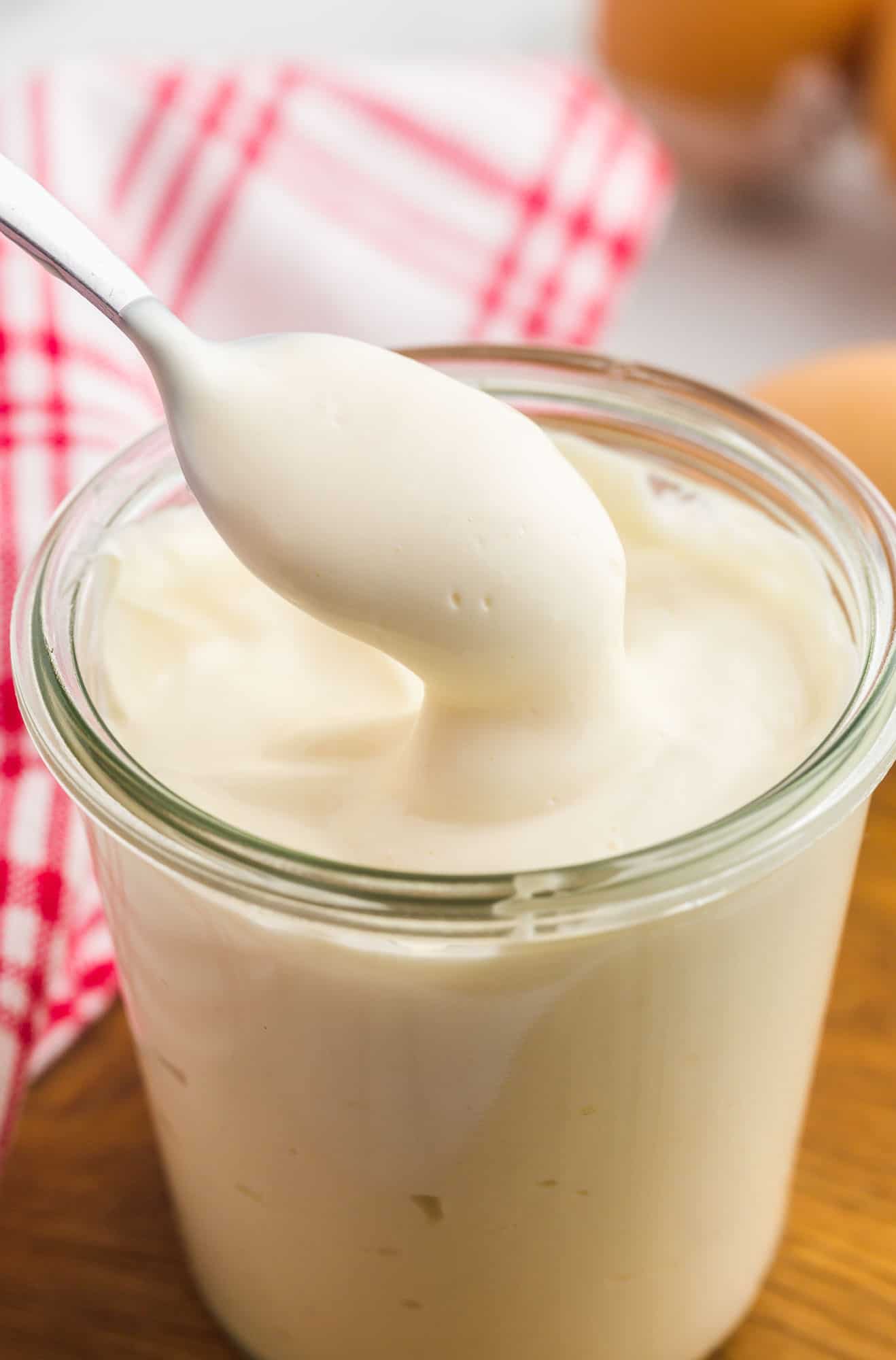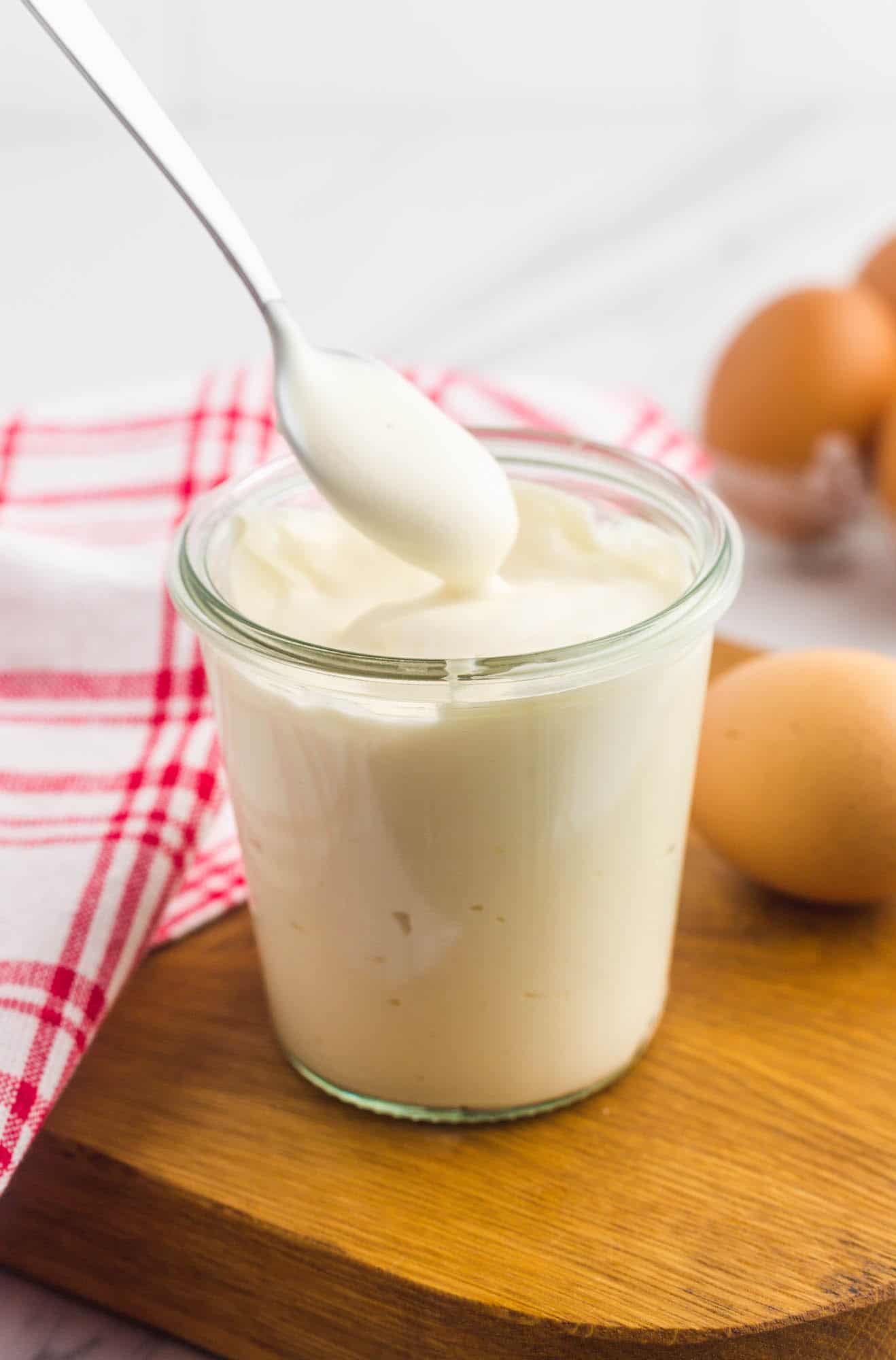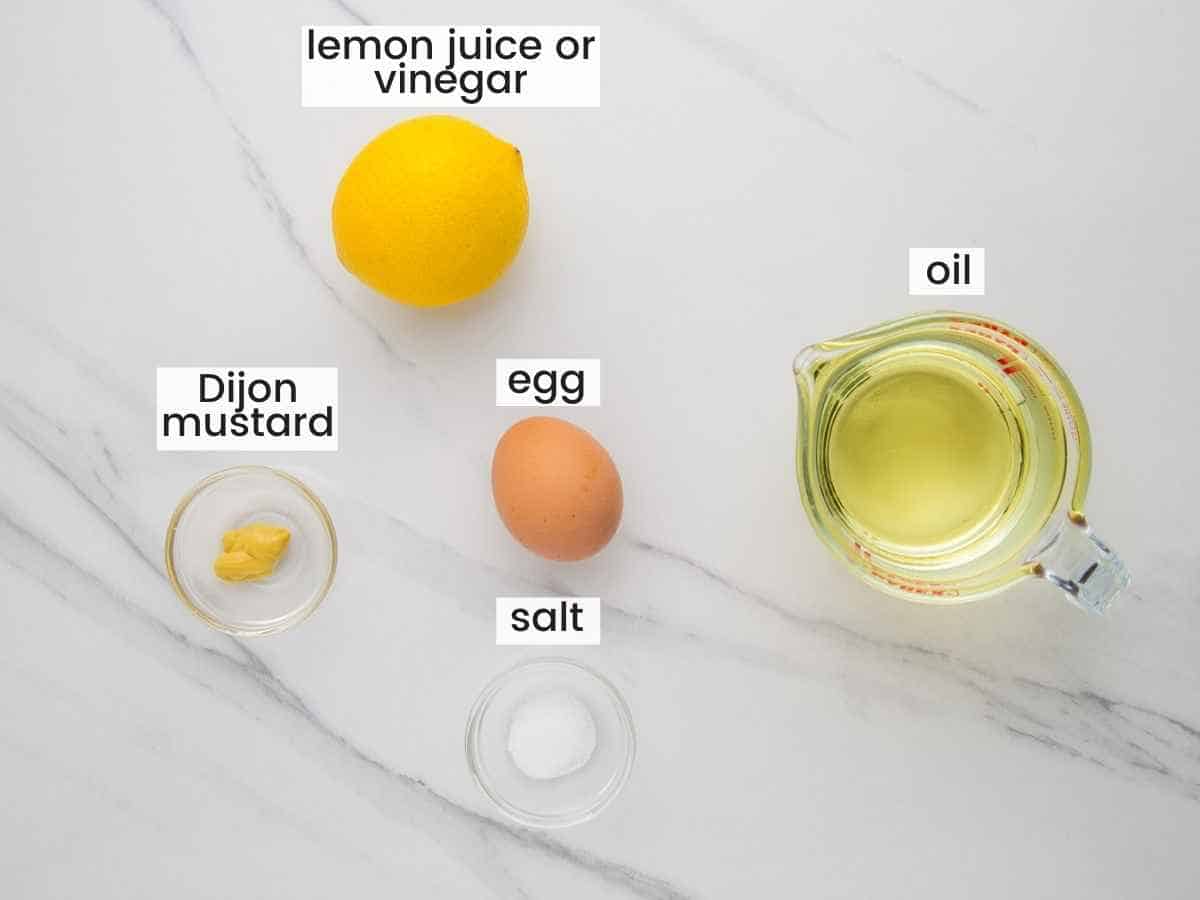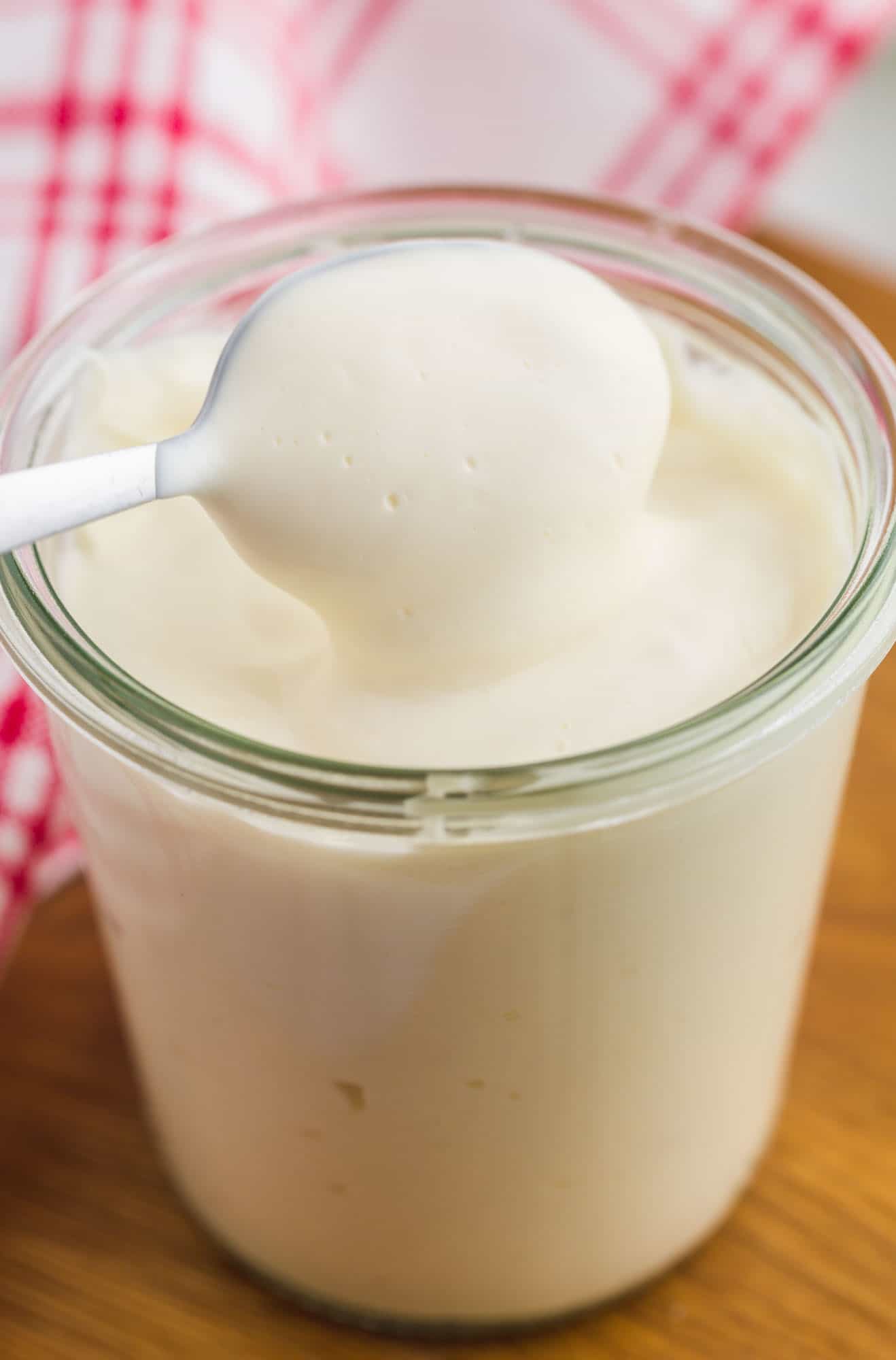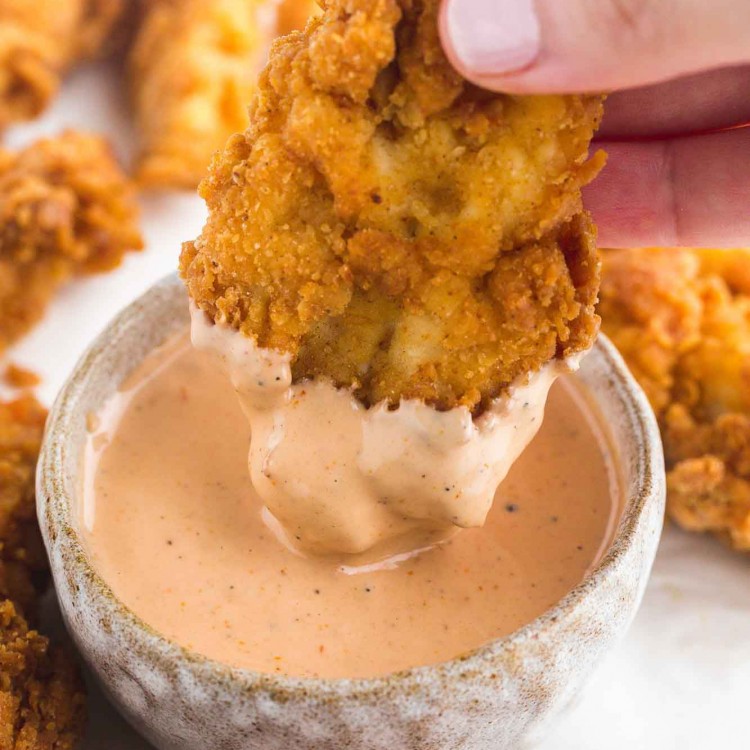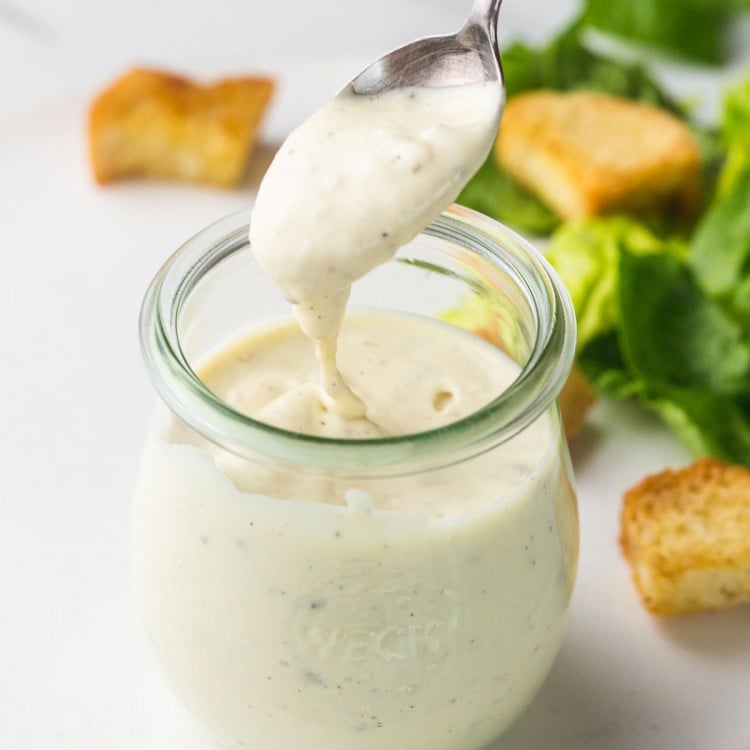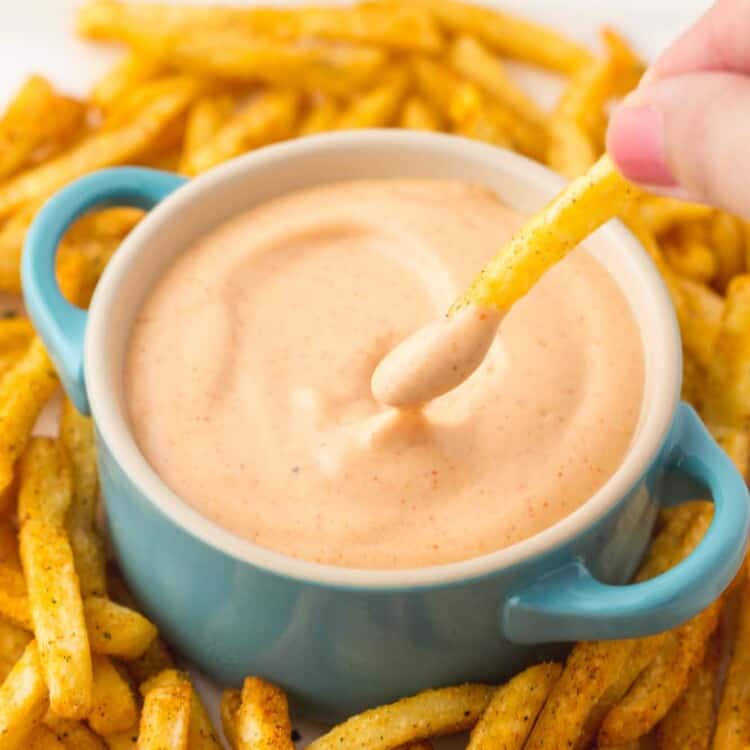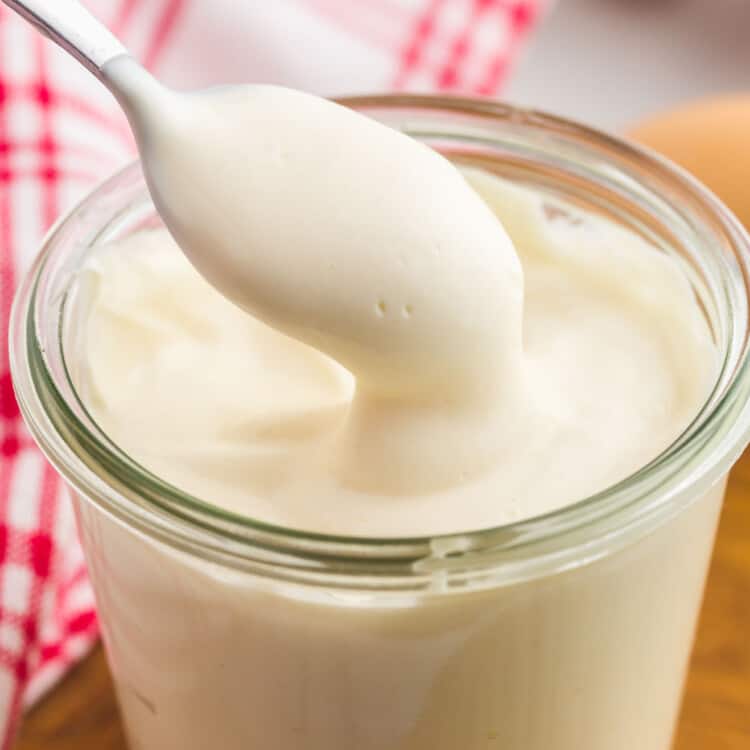Making your own mayo is super simple to do! So here’s the story, I had a BLT sandwich planned for lunch, I started prepping and then I realized that I was out of mayo. It’s one of these condiments that I always buy from the store without thinking about it. Instead of running to the store, I decided to make my own mayo (I’ve made it in the past and know that it’s easy to do). So I got my immersion blender out, and made this super creamy and irresistible mayo in a minute. You know the kind of mayo you keep taste testing as you make a sandwich 😅 This also made me realize that homemade mayonnaise tastes MUCH better than store-bought! It’s fresh, doesn’t contain any unnecessary ingredients like sugar or preservatives, and it’s just so easy to make. Use in sandwiches, salad dressings, dipping sauces, and more! Make a homemade chicken salad with homemade mayo if you want to really enjoy this scratch-made sauce! I also have a vegan mayo recipe that uses gram flour instead of egg in case you need one!
Why You will love this recipe
Mayonnaise Ingredients
Here’s what you need to make delicious homemade mayo: Complete list of ingredients and amounts can be found in the recipe card below.
Egg – You need one large and fresh raw egg at room temperature (70-80°F). The egg is a very important ingredient in mayonnaise, and I’m personally not concerned about using raw eggs in recipes. But if you’re nervous about using a raw egg you can either use pasturized eggs or try and heat up the egg without cooking it. You will need to heat up the egg to 140°F/60°C. Mustard – This ingredient might be a surprise to you, but mustard is such an important ingredient in making mayonnaise for 2 reasons. First, it adds a delicious flavor and “seasons” your mayo. It also helps emulsify and stabilize your mayonnaise, without the mustard you are risking your mayo breaking. I like to use Dijon mustard, but if you don’t have it then yellow mustard is an acceptable substitute. Oil – Use neutral flavored oil that is refined such as sunflower, grapeseed, safflower, avocado, rice bran, or canola oil. You can also use light olive oil that is not bitter, but avoid using extra virgin olive oil as it’s too strong in flavor and can be overpowering. Acid – You can use fresh lemon juice or white wine vinegar or both! These are added mainly for flavor, but also help stabilize the mayonnaise. Using just vinegar will make your mayo taste more like store-bought, and will increase its shelf life. Salt – To season the mayo! Mayonnaise is a cold sauce so it should be well seasoned for the flavors to shine.
Optional Ingredients
You can add other ingredients for flavor such as garlic clove, and freshly ground black pepper. You can also add a little bit of sugar if you want a flavor that’s close to the store-bought stuff.
How To Make Mayonnaise
The key to making a stable homemade mayo is the equipment. While some recipes use a food processor or a bowl and a whisk, it does require some technique. So to make things easier, I like to use a stick blender (immersion blender) and my mayo turns out perfect every single time! Here’s how you make homemade mayo in just 2 steps:
Success tips
Room Temperature Ingredients. Make sure that all of your ingredients are at room temp. If they’re too cold or warm, the mayonnaise might break or not come together at all. Use the Right Jar. Avoid using a bowl that is too wide, you need a jar that’s almost the same width as your stick blender so it’s all tight and emulsifies easily. Adjust the Consistency. If your mayonnaise is too thick, or you just like it thinner, you can add about a tablespoon or two of water and blend again. Taste the Mayonnaise. Always taste the mayonnaise after you’re done, you might need to tweak the flavors a little like adding more lemon/vinegar or salt.
How to Fix Broken Mayonnaise
Things might go wrong, and your mayo might not emulsify and you’ll end up with a curdled mixture that you don’t know what to do with. But don’t worry, there are a couple of simple fixes that you can try:
Storing Tips
Homemade mayonnaise must be stored in a sealed container in the fridge for up to one week (if it lasts that long!). I don’t recommend freezing it, the emulsion will break if frozen. If you’re wondering what is that jar that I’m used in my images, these are Weck Jars and they’re my favorite for storing sauces, fridge pickles, nuts, and more. Save this recipe for the next time you need to quickly whip up homemade mayonnaise, or Pin it for more people to enjoy too! © Little Sunny Kitchen
